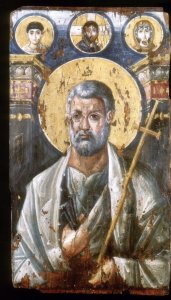Le nom et l'image : présence et absence
Résumé
The image is closely connected to the name that accompanies it. The inscription has, in fact, a seal value, it identifies the representation by tying it to the prototype. In other words, it is the name that manifests the similarity with the model and makes the effigy authentic, while the figurative representation becomes a mere sign and paradoxically it expresses the dissimilarity. Indeed, when the name is placed next to the image, any doubt about the identity of the person depicted is removed. It is the word, therefore, that conveys the similarity, while the image undergoes a process of stereotyping, moving away from the real form and visually dematerializing the similarity. Giovanni Damasceno affirms, moreover, that divine Grace is given to the material, of which the images are composed of, by the denomination of the persons represented; and the bishops of 787, taking up this concept, argue that, like the sign of the cross, the images are sanctified by the meaning of the name that unites them to the prototype. The representation combined with the identifying appellation thus becomes nomen sacrum, acquiring the intrinsic sacredness of the name itself. The inscription affixed to the side of the figure is therefore transformed into a sort of signature, it assumes the role of a consecration and acquires a prodigious, almost magical evocative value.

Téléchargements
Publiée
Comment citer
Numéro
Rubrique
Licence
(c) Tous droits réservés Elephant & Castle 2023

Ce travail est disponible sous la licence Creative Commons Attribution 4.0 International .





